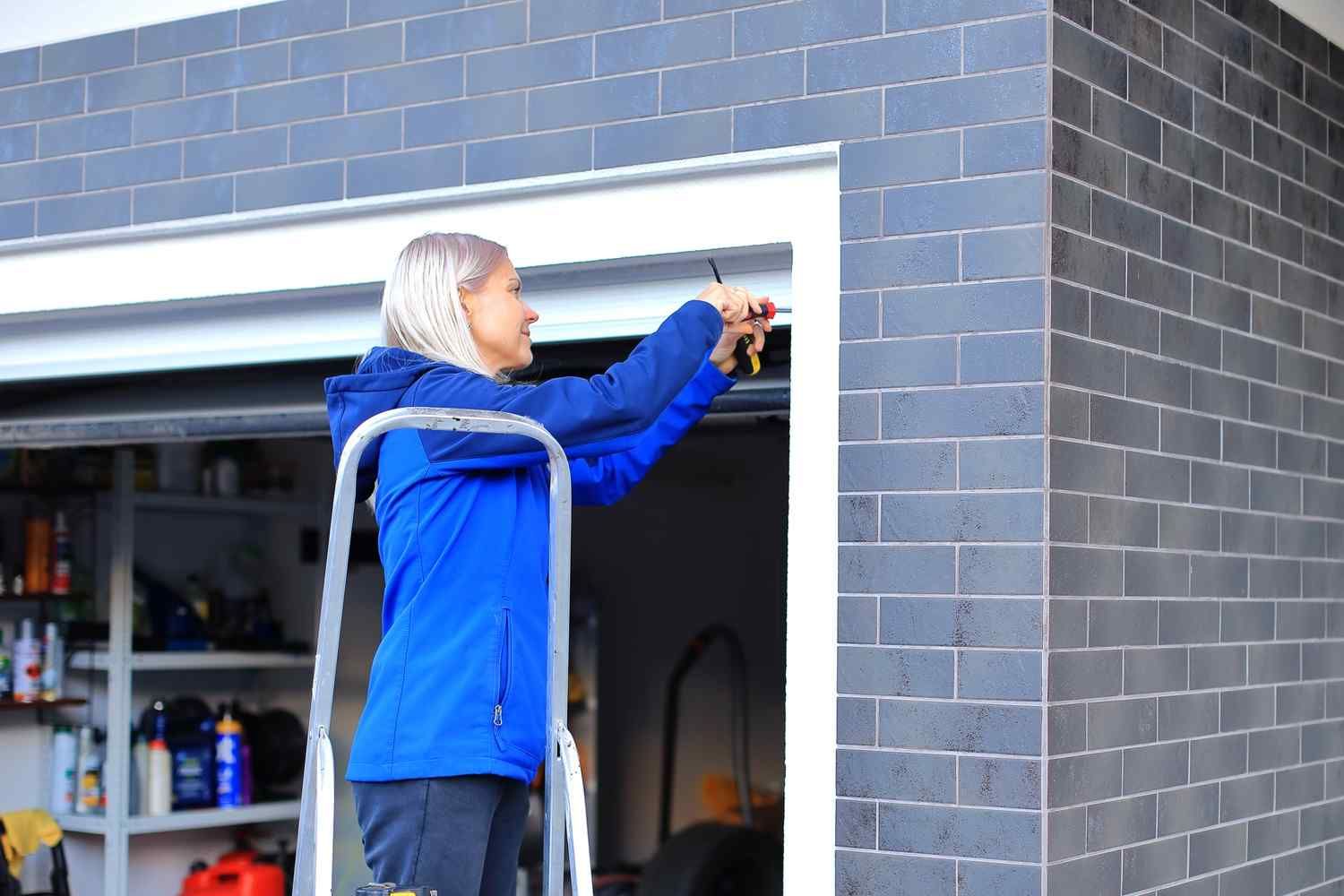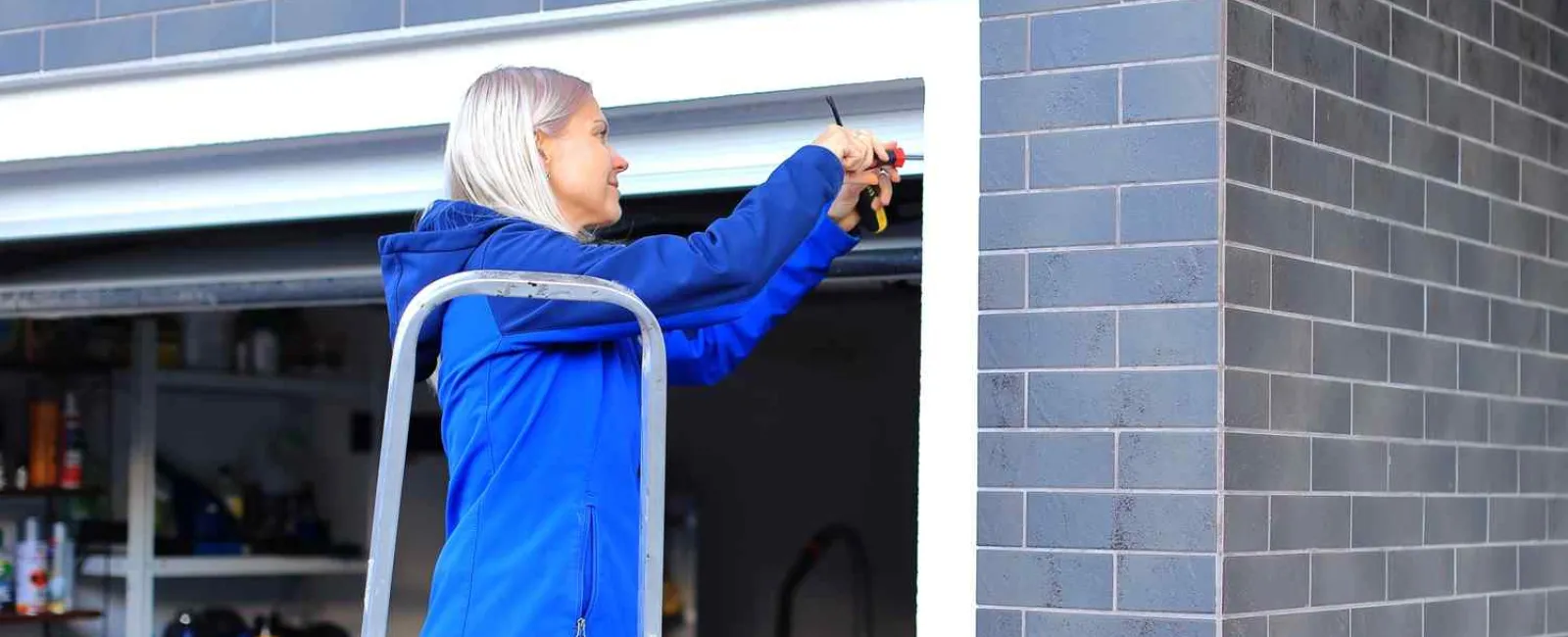- Learn how often you should service your garage door
- Understand what maintenance you can tackle and what requires a professional
- Find out what to watch out for when doing garage door maintenance

Your garage door is unlike any other entryway into your house. For some of us, it's the true "front door" providing our main entry and exit point in the entire home. Every use strains and tests the garage door's electric, metal, and plastic components until they eventually reach the end of their usefulness. Finding out that one piece or another of your garage door is malfunctioning could create an unwelcome delay or worse, a serious injury risk.
In this article we'll show you how routine garage door maintenance, performed at least twice a year, can avoid surprises and extend your garage door's lifespan. With close inspections, safety tests, cleaning, and basic tool work, you can keep your garage door safe and spot problems that require professional attention.
Start With An Inspection of Your Garage Door
Most days, you're probably opening your garage door in a bit of a hurry to get where you need to go so it's understandable if you haven't paused to look and listen to the door in operation. But developing a habit of listening to your garage door can help you detect issues even between more in-depth garage door maintenance.
When you do have time to conduct a more thorough inspection, here's some things to watch out for:
- Creaking or Grinding Sounds: Creaking or grinding sounds can indicate a need for lubrication on the metal or nylon components.
- Whirring or Buzzing: Whirring sounds might be a problem with the door opener's motor. They have a fairly long lifespan but do eventually need to be replaced.
- Scraping Sounds: Loud scraping sounds might mean the door is off-balance or off one of its tracks. You should also be able to see this issue.
- Uneven operation: Observe the garage door opening and closing, is it a smooth, even process? Or does one side lift up faster than the other or take longer than normal? This can be a sign that the door needs repair.
- Inspect Tracks and Hardware: Armed with a socket wrench, you can look for any loose nuts or bolts along the garage door's tracks. Repeated use can loosen these, impacting performance and straining the entire door.
- Check the Photosensors: Whenever you service a garage door, you should check the photosensors. If these are out of alignment with each other, dead, or broken this can create safety hazards.
- Observe the Springs: Your garage door likely has either a torsion or extension spring running horizontally over the door. If it's starting to make any noises or you notice something out of place, call a professional.
Test Your Garage Door's Safety
When you're just learning how to maintain a garage door, your main focus should be on the door's overall safety. Most modern garage doors come with three main safety features: balance to stay in place, mechanical reverse, and photosensor reverse. Here's how to test each feature:
- Check door balance: While the garage door is closed, pull the red cable to disconnect it from the automatic opener. Then, open the garage door about halfway. If the door closes, it's time to call a technician to balance the door.
- Test the mechanical reverse: Reconnect the door to the automatic opener, open the door, and then place an item directly in the door's path. Set the door to close. If it hits the object and continues to try to close, you should contact a professional for garage door maintenance service.
- Ensure the photosensors work: If your initial observations indicated that the photosensors at the sides of your garage door tracks were out of alignment, start with a wipe to clean them off. Then, loosen the hardware keeping them in place and lower them as far as possible. Then, begin adjusting the face until the LED light is solid. You can also have a string tied across both sensors and a level to ensure a perfect alignment. With the door set to close, test the photosensors at various points along their beam to ensure the door reverses.
Lubricate and Clean
If your garage door passed all the safety tests, you can wrap up your DIY garage door maintenance with lubrication and cleaning to ensure better performance and longevity for the garage door.
While you likely have WD-40 on hand, white lithium grease is best for garage door hardware. Lubricate the rollers to prevent grinding and scraping of metal on metal and to break up any rust that may have formed. You can also lubricate the hinges, end bearing plates, rails, and especially the springs above the door.
You can also use a power washer to clean the outside of your door. For the inside, or if you don't have a power washer, you can use a sponge with a household detergent and water to clean the inside of the door. Clearing away cobwebs, debris, and dirt doesn't just make the door look better, it keeps away problems and pests that could cause it to malfunction.
Turn to Balanced Garage Doors for Serious Garage Door Maintenance
Regular garage door maintenance is a great way to keep your door operating smoothly and spot issues with your door. If you do spot a problem, schedule service from Balanced Garage Doors. Our fast, reliable team will handle the repairs to restore your garage door to normal.
